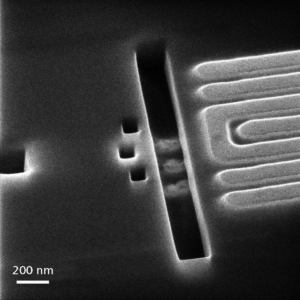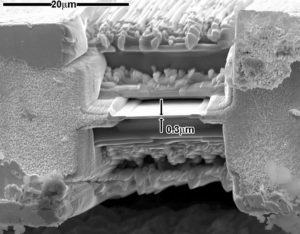Crack Microcontroller ATMEGA162PV Program
The first step to Crack Microcontroller ATMEGA162PV is execute electrical test on the MCU see if all the pin over it are all run in proper condition, then decapsulate the ATmeg162PV and extract MCU Program and data from flash and eeprom memory;

The first step to Crack Microcontroller ATMEGA162PV is execute electrical test on the MCU see if all the pin over it are all run in proper condition, then decapsulate the ATmeg162PV and extract MCU Program and data from flash and eeprom memory
The Internal Voltage Reference will be enabled when needed by the Brown-out Detection, the Analog Comparator or the ADC. If these modules are disabled as described in the sections above, the internal voltage reference will be disabled and it will not be consuming power.
When turned on again, the user must allow the reference to start up before the output is used. If the reference is kept on in sleep mode, the output can be used immediately. Refer to “Internal Voltage Reference” on page 62 for details on the start-up time if unlock microcontroller at89c51rc2 eeprom.
If the Watchdog Timer is not needed in the application, the module should be turned off. If the Watchdog Timer is enabled, it will be enabled in all sleep modes, and hence, always consume power. In the deeper sleep modes, this will contribute significantly to the total current consumption.
Refer to “Interrupts” on page 69 for details on how to configure the Watchdog Timer. When entering a sleep mode, all port pins should be configured to use minimum power. The most important is then to ensure that no pins drive resistive loads.
In sleep modes where both the I/O clock (clkI/O) and the ADC clock (clkADC) are stopped, the input buffers of the device will be disabled. This ensures that no power is consumed by the input logic when not needed. In some cases, the input logic is needed for detecting wake-up conditions, and it will then be enabled when unlock mcu at89c51ed2 flash.
Refer to the section “Digital Input Enable and Sleep Modes” on page 85 for details on which pins are enabled. If the input buffer is enabled and the input signal is left floating or have an analog signal level close to VCC/2, the input buffer will use excessive power.
For analog input pins, the digital input buffer should be disabled at all times. An analog signal level close to VCC/2 on an input pin can cause significant current even in active mode before unlock chip at89c5130a flash.
Digital input buffers can be disabled by writing to the Digital Input Disable Registers (DIDR2, DIDR1 and DIDR0). Refer to “Digital Input Disable Register 2 – DIDR2” on page 293, “Digital Input Disable Register 1 – DIDR1” on page 273 and “Digital Input Disable Register 0 – DIDR0” on page 293 for details.
Tags: decap chip bin,decap chip code,decap chip data,decap chip eeprom,decap chip file,decap chip firmware,decap chip hex,decap chip program,decap chip software


